Supermodel Claudia Mason
Interviews #1 - The native New Yorker, original supermodel, author, spokesperson, and life coach sat down with me to discuss everything from fashion to finding God.
Back in the early 90s, supermodels were like rock stars. Before Hollywood actresses dominated luxury ad campaigns and glossy magazine covers, supermodels reigned.
As a young teen, I was enamored with the glamorous world of fashion. My mother gave me a hardback photography book called ‘The Supermodels’ featuring about 25 girls, a portfolio of the best models in the world. Each girl had a back story—where she grew up, how she was discovered, who she modeled for—and I would pore over the pages in awe.
I knew most of their names and faces already, but among the elite selection were two supermodels named Claudia: Schiffer and Mason. I was familiar with the Teutonic blonde from the Guess ads, but Mason’s face I had not seen before. With her 5’11” frame and exotic features, sultry eyes that exuded confidence, she was a favorite of the world’s greatest designers and photographers, her face on magazine covers everywhere.
Fast forward two decades. Across the room at a fundraiser in New York, I spotted a gorgeous brunette towering above the crowd. She was dressed in formal business attire, but those striking features were unmistakable: it was Claudia Mason from my supermodel book! After a mutual friend introduced us, I was struck by how smart she was and discovered that we spoke the same language—not just English, but the one of those who have embarked on the spiritual path of evolution and awakening.
We became friends, and I was thrilled when Claudia agreed to let me interview her for ‘Kittenesque’. On a sunlit day, we curled up in a cozy corner of The Marlton Hotel near Washington Square Park and chatted the afternoon away.
You look fantastic! Once a supermodel, always a supermodel. What is your philosophy on aging? Like me, you’ve never had Botox or fillers. Do you believe in letting it happen naturally?
Yes, and that’s why you look so young. I don’t believe in telling a woman not to do some beauty regimen, but for young women (and men), if they think they should do Botox at 18 to prevent aging, they need to know they have a choice. There is a whole cornucopia of options besides chemicals, fillers, and knives into flesh. I believe in holistic beauty, natural eating, spiritual life, Vitamin D from the sun, facial exercises—our face needs to be exercised like our body—and non-toxic, non-chemical products. There are so many out there.
What was it like to grow up here in New York City?
To tell you the truth, I had nowhere else to compare it with, so this city was all I knew, but what a beautiful love story I had! As a kid, I was drawn to the performing arts, and my mother took me to as much culture as you can imagine—museums, Lincoln Centre, the opera, the ballet, the theatre.
I soaked it all up—the joy, the excitement, the lights, the noise—which wasn’t even noise to me as it was all part of the incredible show that is New York City. I loved it, but it’s a tough place. There were safety issues, but I learned how to be streetsmart as any New York City kid has to. Back then, you had to figure it out for yourself. There was something very good about that—it helped with resiliency, which served me well later on.
I have to emphasize the diversity because that’s what makes life rich. I was friends with kids from all kinds of backgrounds—not just talking ethnic diversity but class—I mean, you’re a British woman and the class thing we don’t have so much of here—but we do, obviously.
You were discovered by a model scout in Tower Records. I love that because it doesn’t even exist anymore. I mean, who buys CDs these days?
So let me tell you—I was buying a record, darling. I mean, I have to be real. We were two thirteen-year-olds looking for records.
Wow—thirteen is so young! And did you start working immediately?
Yes. Ford and Elite were the only games in town—globally—at that time. The scout was from Elite’s petite division, and I was with my petite school friend. The scout gave me her card and told me to tell my parents to bring me into the main office, but she ignored my petite friend, so I had no friends in school the next day.
One of your first jobs was shooting with Avedon for Versace? That’s major.
I hate to say this, but it almost didn’t happen. I told my mom I would miss a week of school and it would set me back. I was an ‘A’ student. My mom didn’t know what to do. There was a lot of back and forth. Thank God I took the job. It was fabulous! Avedon was a delight. Gianni and Donatella were there, and all these hot male models. I had such a crush on them.
You must have turned down a lot of jobs if you were still in school?
If I had said yes to everything, that would have been the end of my education, which my parents didn’t want and nor did I. The agency tried to convince my parents to forget about high school for me because I was so in demand. They were a business, after all. Luckily, my parents said no. Four years later, after I got into good colleges, I decided: I’m doing this. So instead of going to college, I took up modeling full-time.
Also, I wanted to be fifteen with other fifteen-year-olds. I did not want to be with 25, 35, 45-year-olds. When you’re on set with much older people, and this was a different climate before New York child labor laws or the Me Too movement, the adult world can be very uncomfortable.
You had scoliosis and had to wear a body brace from age 12 to 18—how did that interfere with work?
I never left it at home! Years later, Mario Testino told me he thought it was so sweet, and we had a laugh about it. Every time I turned up on set I would say, “I’m wearing my body brace for hair and makeup and then it can only come off for a couple of hours during the shoot.”
I took things very seriously—and it was soothing for me to follow the doctor’s orders, which I would repeat to the fashion people, and because I was so young and so in demand, they all thought it was adorable. Just as long as that thing came off when the clothes went on!
When I moved to Paris after finishing school, I looked at that body brace and said, “Oh no no no, I’m done.” I’d been wearing it for six years by then, so I threw it out.
Which city, besides New York, left the biggest impression on you?
Paris! My God—the food, the culture, the language, the wine, the architecture! There’s a slowness there that I had never felt in New York, an inner slowness. You stop and eat lunch for two hours—I couldn’t believe it! The nervous system was more regulated. I also loved London. I lived there for six months.
I think my favorite of all your magazine covers was by David Bailey for British Vogue in ‘92. So classic.
Oh yes, I love that one.
Have you seen the new miniseries on Disney+ ‘In Vogue: The 90s’?
No, not yet.
You’re in it! They were talking about that infamous Corinne Day shoot with Kate Moss for British Vogue—you know, the one in her underwear with the lights— you were on the cover of that issue, too.
Oh yeah, on the beach in the Caribbean. I remember.
That was 1993 when the face of fashion started to change. As one of the original supermodels, what was it like to live through the grunge era—to go from looking so glamorous to—well, the complete opposite?
The early 90s glam was obviously coming from the 80s, and then suddenly there was grunge. It was wild. The whole era—Pearl Jam, Nirvana—everything became more relaxed—on set, the runway shows, behind the scenes.
I came up during a time when fashion was all about holding a pose—like when you think of Irving Penn—and not showing any imperfection. Grunge broke some of that, there was something more enjoyable and it was physically more comfortable to be in those clothes rather than the stiff stuff from before. Those were the positives, but then it became too much with that horrible phrase ‘heroin chic’.
You adapted well.
Thank you. A lot of us who were at the top in the early 90s were able to adapt because, speaking objectively, anyone at the top of their field can. That’s why you’ve gotten there—because you’re a chameleon.
Were you in that historic grunge show by Marc Jacobs for Perry Ellis?
Yes! It was a brilliant show, brilliant look, brilliant season. Just brilliant.
And after that, everybody loved Marc Jacobs, even though Perry Ellis fired him.
That happens with the changing of the guard—they can’t take it, the old power elite—and then they have to.
When did you hear the term ‘supermodel’?
We were told in the early 90s: “This is the supermodel generation.” It was such a phenomenon. We knew it was happening. The egos were inflated, I mean, it’s hard not to when you’re 19 to 22 (years old) being told you are a supermodel.
There were roughly 20-25 of us at the top: the household names—Cindy, Christy, Linda, Naomi—and then the rest of us, to name just a few—Helena Christensen, Nadja Auermann, Tatjana Patitz, Carla Bruni, Meghan Douglas—were household names within our industry, but maybe not in Chiswick (London) or Rhode Island (NY).
Some say that the 90s, pre-smartphones and social media, was the last great decade. Would you agree?
I don’t know if you’re asking about arts and culture outside of just fashion, but since the 90s—the aughts, the teens, and now the 20s—there hasn’t been a new look, style, or trend. The same could be said about music and other forms of entertainment.
That’s true. It’s always “back to the 90s” (or 60s or 70s). Talking of the past, is there a piece of fashion history that you own? Something in your closet you will forever treasure?
Yes. I own two Herve Leger dresses from his original collection (early 90s)—those sexy little bandage dresses—one in royal blue and another in cherry red. I also have a couple of Azzedine Alaïas. I mean, King Alaïa.
Oh yeah, anything by Alaïa is amazing.
You know what I just thought of now, and we could dissect this, I’m not quite sure why but it’s in the zeitgeist. What came in 1997? The computer. Being online. I remember getting a computer in 1997, opening it, and then wanting to get away from it and out into the sun.
Yes, I got my first email address in 1998. That’s when I started spending a lot more time on the computer.
Right, so that all started in ‘97, ‘98, and then you wonder why there hasn’t been any revolution in style or big creative impetus since the 90s, which before then had been going on decade after decade. It’s because everything got digitized.
It happened in fashion photography—instead of everyone on set focusing on the model, it switched to the computer. It also happened on movie sets—the talent being watched on computers. There’s no more film in cameras, and models are performing for photographers who are looking over there at the computer. The sense of creation between photographer and model has been lost—that energy and frequency.
Can you imagine growing up with smartphones and Instagram? I’m so grateful I didn’t! It must be hard for the younger generations.
The digitization is causing kids in big cities like New York, London, and Hong Kong to grow up with a sense of not having to talk to people because all you do is look at your phone and deal with everything there. There’s too much automated stuff. I like when people have jobs—in all sectors of society—grocery stores, subways. Like right now, I am actually looking at you and we are having a conversation. The loss of human interaction disturbs me today.
How do you deal with jealousy from other women?
Great question! We all have unhealed trauma to a certain extent, everyone on the planet. Not just today but all humans throughout history. Until we stop killing each other, the ugliness is so ugly and the beauty is so beautiful. But to answer your question, jealousy comes from unhealed trauma. In a patriarchal society, generally speaking, men have ruled the world, so women have had to compete with each other to get recognition or love or money, or to survive with the men in their life—the boss, the husband, the father—nothing exists for no reason, it’s all based on history.
When other women are threatened, it’s because of their own unhealed trauma. They feel ‘less than’ when they see a beautiful woman, so they project the way they feel onto them. As a child or young woman, that’s very difficult to deal with. As I’ve gotten older, and now being a life coach with an emphasis on the spiritual, it’s all about how I can guide my clients from where they are to where they want to be, help them pivot the perception so that they can choose differently.
I always say to my clients: Divine Alignment leads to Divine Action. It’s all about choice. Do I eat a salad today or a McDonalds? How do I respond to a jealous person? Take a moment to be aware of what’s happening, accept that I haven’t done anything—that’s that person—and then take right alignment to excuse myself from them, or if I can’t, to not react but to respond. That’s what ultimately I have discovered works best, and what the yogis and the brilliant masters of the ages, men and women from all over the world, from Buddha to Jesus, all the greats have been saying: it’s all inner life, it’s all within you.
Indeed. So, after modeling you took up acting in LA for a few years, authored a book called Finding the Supermodel in You, and as well as being a certified life coach, you are also a stroke survivor and spokesperson for the American Stroke Association. I always thought strokes happened in old age, but I guess they can strike at any time. What happened in your case?
It was a freak accident—an injury to my neck in a dance class. I opened my eyes and saw nothing. I lost sight for under an hour, which was terrifying. This happened over ten years ago, but even now, I am missing the upper left quadrant of my sight. The vertebra healed, but the fallout, instead of cognitive or muscular, was to my sight. Thank God I got most of it back, and Thank God I didn’t die.
Strokes can happen to anyone at any time, no matter their age or gender. These days, a lot of people in their fifties are dying from strokes. It usually happens from impact or injury. Stroke prevention, like any illness, is to look at what we are eating, how we are exercising, what is our spiritual / inner life like? Again: Divine Alignment leads to Divine Action.
When I was in hospital for a week after the stroke, I was very much in touch with God. I use that word—I am not religious but I am spiritual—call it The Universe, Higher Power, The Jedi Force. That’s what got me through and what I think helps heal physiology in the physical body.
It’s so important to keep the nervous system regulated as it helps the organs thrive. The body wants to heal—our bodies are created to heal. We have to allow it. During my recovery, I got back to healthy eating, my meditation practice, exercise, and community. You cannot do anything alone.
What would you advise those who want a spiritual life and are trying to find their path or community—those who aren’t religious or don’t know what to believe—how can they find God?
Go back to when you were a child, or the first memory of what that meant to you and what you were drawn to—a church, a temple, a mosque—and if it’s none of those, is it a yoga studio? A garden? The ocean? Go to your passion, go to what ignites you. I think that’s what guides people the best.
My mother was my first spiritual teacher, in a way. She used to have Buddhist monks over for dinner. Find the people in the world that can help you on the journey—best friends, parents, coaches, counsellors, consultants, rabbis, priests—there are so many healers out there.
What is your spiritual practice or favorite prayer?
I often say a prayer from Lesson 71 of A Course in Miracles: “Holy Spirit, what would you have me do? Where would you have me go? And what would you have me say and to whom?”
In the mornings, I practice TM (Transcendental Meditation.) We are here to grow and a human being needs an internal practice every day so that they are able to get through the muck of life, sometimes the hell of life, in a way that is not killing them. Hopefully, if they have a spiritual practice, they’re not going to choose the needle in the arm.
A spiritual practice is simply The Will To Good: do the best for yourself and others, pay it forward, have a purpose, and help others. Then you won’t want to disappear into heroin or alcohol or whatever.
Finally, I asked Claudia to record a few words of wisdom and advice for young people:
Wherever you are in life, if you’re looking for support or guidance, you can book a free virtual consultation with the delightful Claudia here.
You can also get a copy of her book about teen modeling here.
IG: @ClaudiaMason1

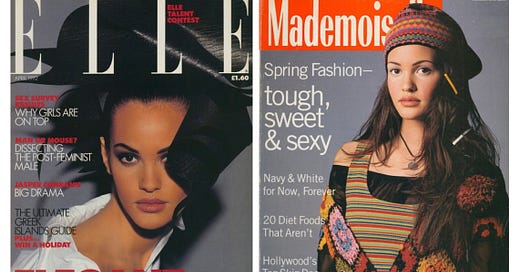


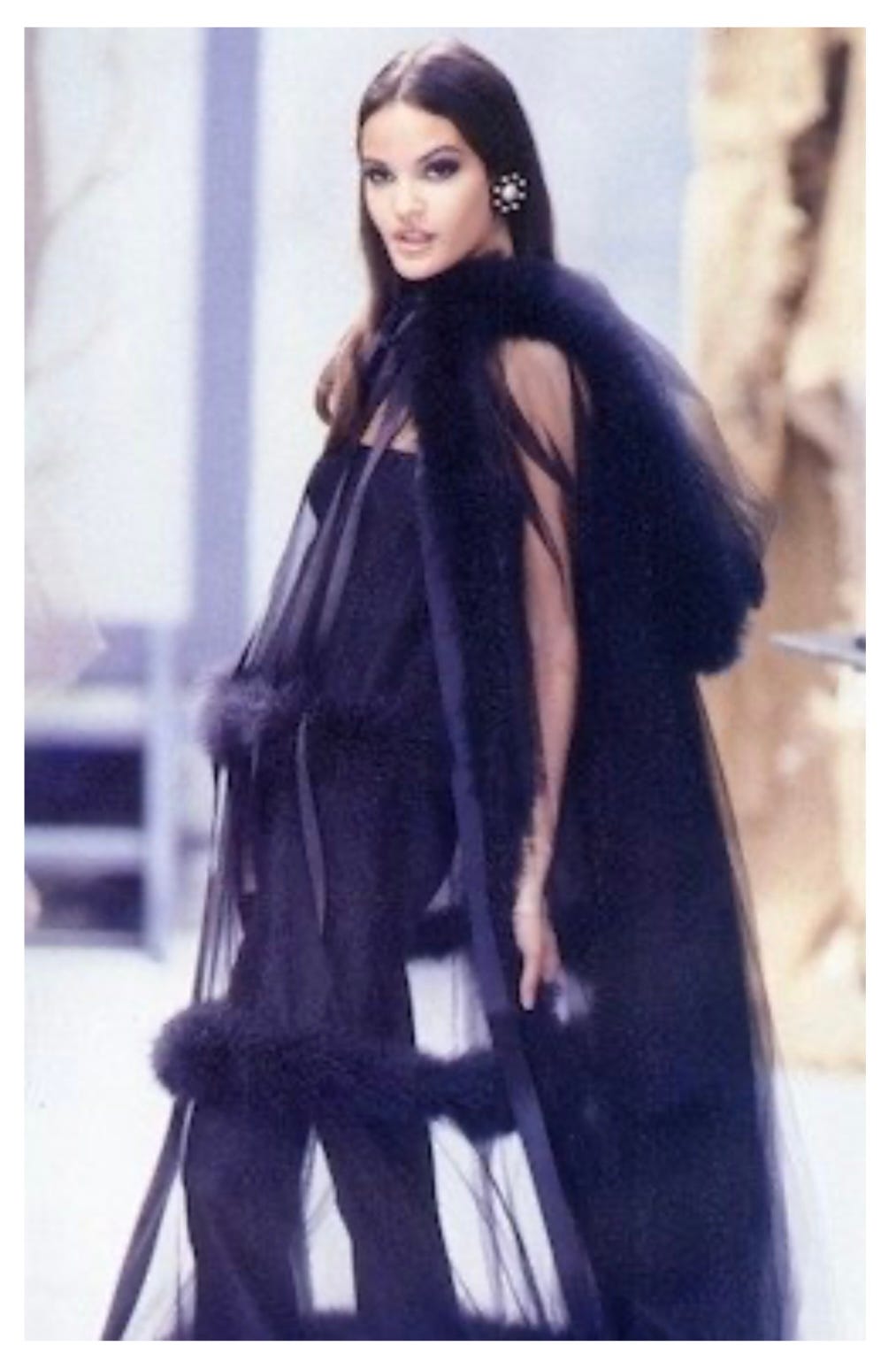
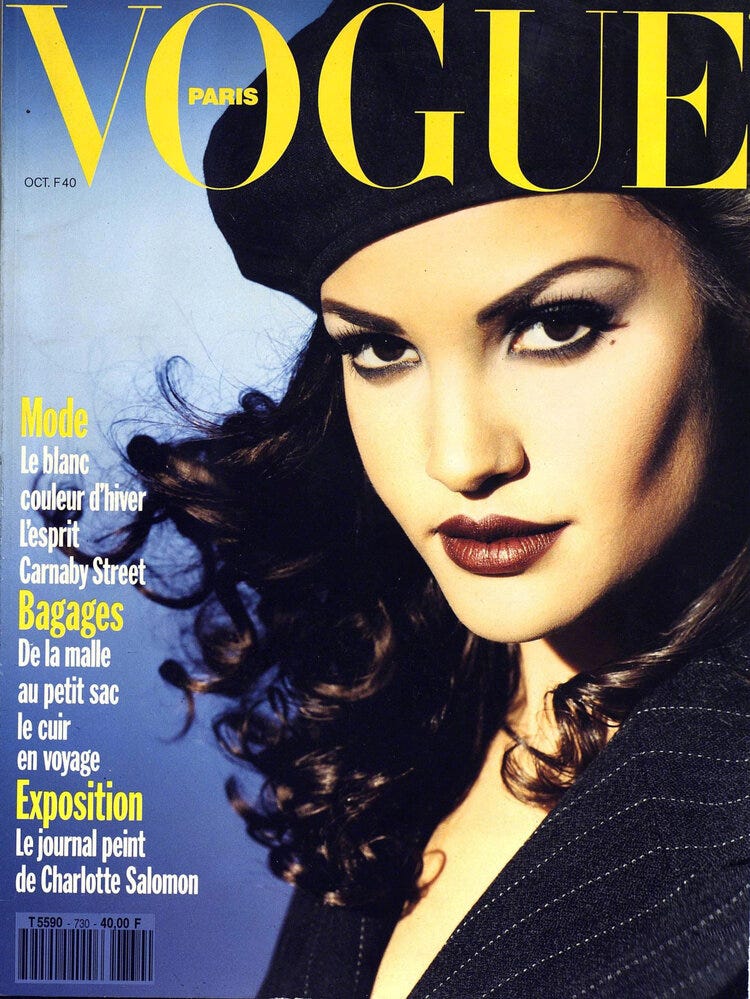


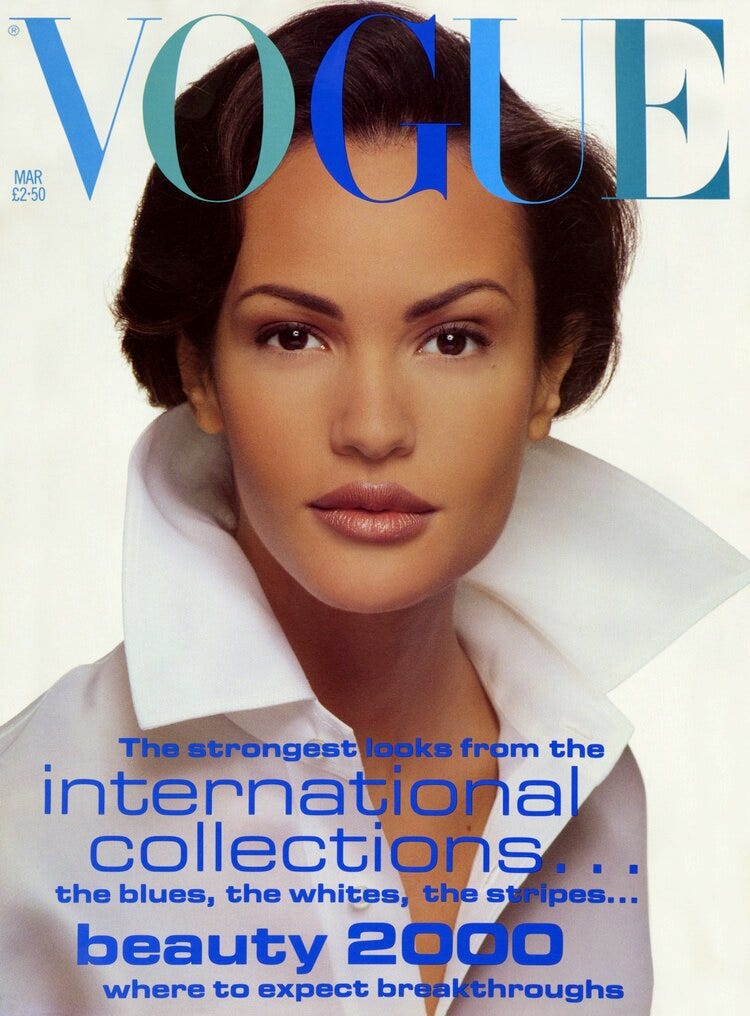

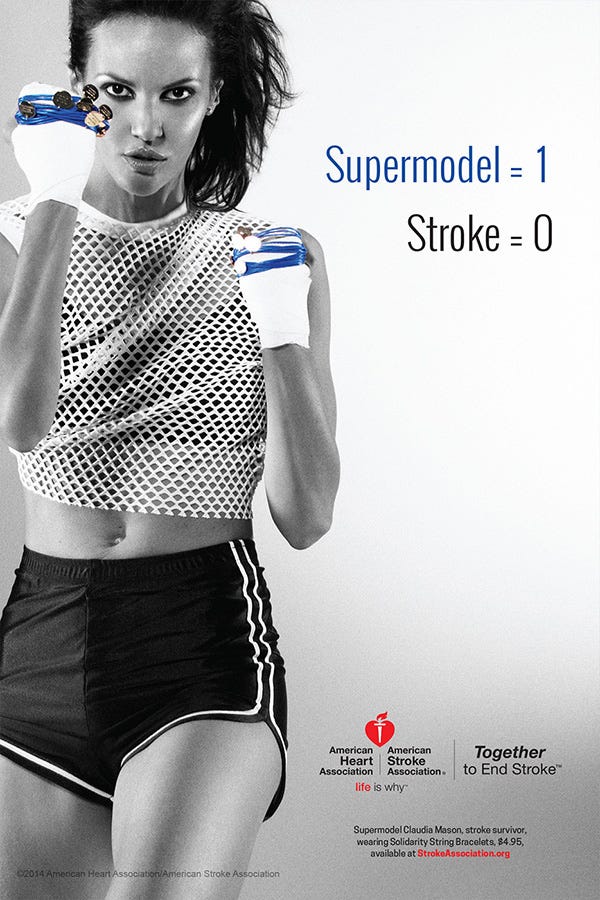

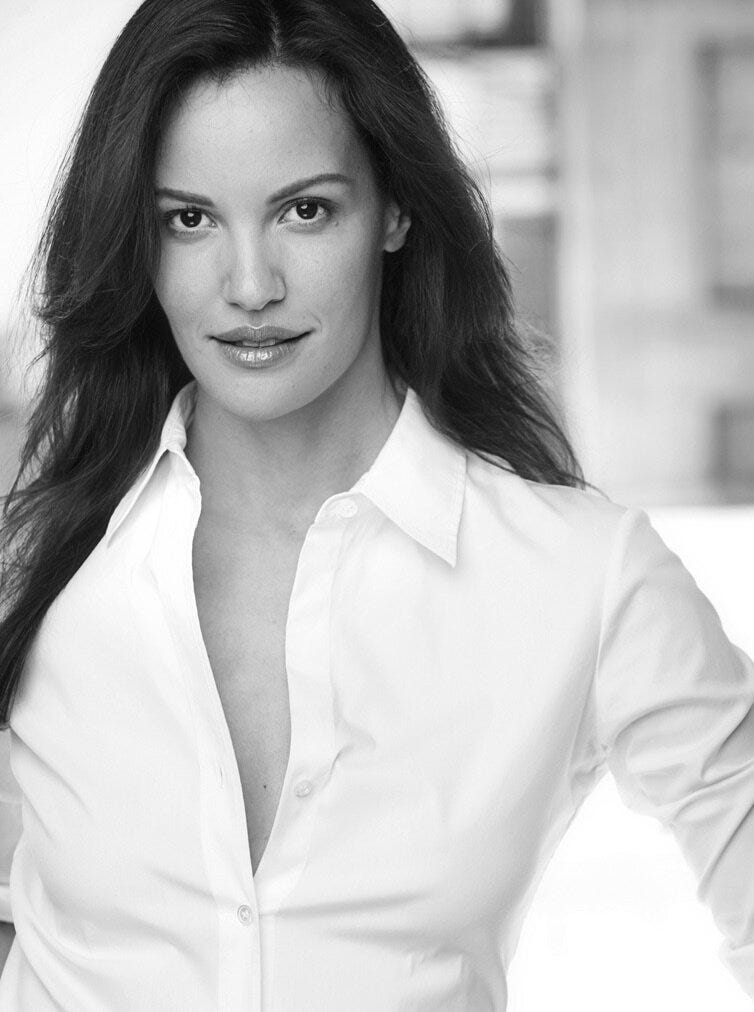
I loved this so much. Such a fabulous interview. And I LOVE both of your stance on Botox and filler. So beyond refreshing.
I remember being a little girl in the 80’s and 90’s and my uncle (who was very much in the NYC scene) suggesting to my parents that I model. It became an obsession of mine - in part because they both said absolutely not - and my greatest fantasy was being discovered at a Tower Records. Any time I would come into the city, I would be convinced that my big break was just a glance away. They just never brought me anywhere cool like a Tower Records 🤣
Anyway, for a lot of reasons, I loved this. It was a peek into *what could have been* and the evolution of what I’m sure was the dream of a lot of little girls who grew up in the era of the supermodel. I loved getting to know Claudia beyond the glossy magazine covers and the “grown up” model to model conversation.
I also think it revealed a lot about who you are, what you’re passionate about, and the heartfelt way you show up for all the connections in your life.
Beautifully done, and I can’t wait for the next issue :)